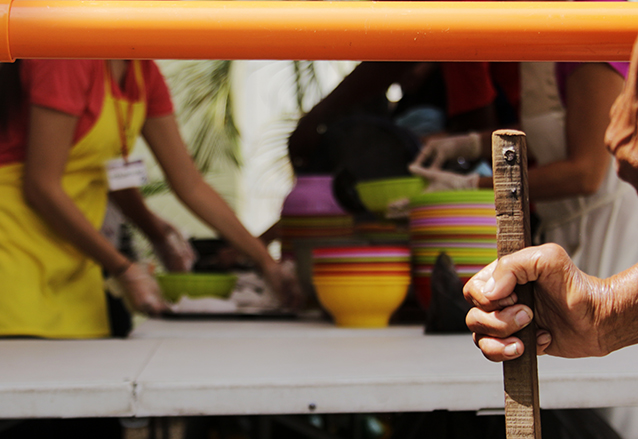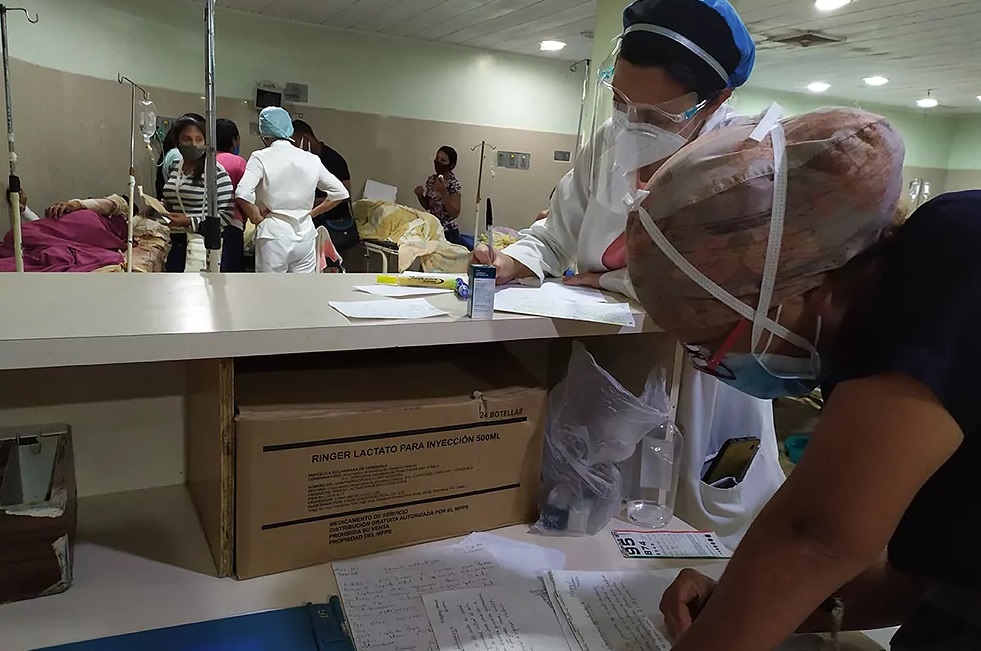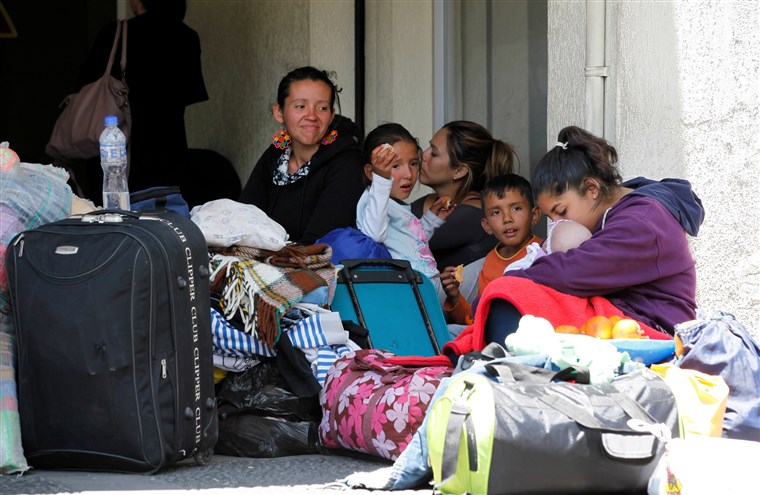Mulier presents the results of the monitoring of media reports of Venezuelan women and girls rescued from trafficking networks in 2022
2022 recorded the highest number of cases since our monitoring began in 2019. A total of 1,390 Venezuelan women were rescued from trafficking networks, including 284 girls and teenagers.
Of the overwhelming number of rescued Venezuelan women and girls identified in our monitoring, 157 were registered in the first half of the year alone. The start of the invasion of Ukraine marked a significant drop in the reports of trafficking in Venezuelan women and girls across the media. The visibility of the situation also varies according to the context. Every time other events are perceived as more urgent or relevant by the media, human trafficking takes a secondary place.
However, on the occasion of the World Day Against Trafficking in Persons in the second half of the year, the media began publishing updated figures from different organizations that deal with cases of human trafficking. This data allowed us to register a larger number of Venezuelan women and girls detected and rescued from trafficking networks.
Detentions increase
One positive aspect of the findings for 2022 is the increase in the number of individuals arrested for the crime of human trafficking in comparison to previous years. In particular, the operations with multilateral and multi-agency coordination led to a relevant number of arrests, including Operation Turquesa IV deployed by Interpol in several Latin American countries with a result of 268 people detained.
Our monitoring registered 502 people detained in connection with the rescue of Venezuelan women and girls victims of human trafficking, including 107 men (21%) and 45 women (9%). 77 of the people detained are Venezuela nationals (15%), including 28 women and 47 men. It is worth mentioning that an important number of reports did not establish the gender or nationality of the traffickers, only the number of people arrested.
Among the cases registered in 2022, only the participation of two members of the public force in the commission of the crimes could be clearly verified. Operation Cattleya, carried out in August by the authorities of the Dominican Republic with the support of the IOM and the United States Department of Homeland Security accomplished the rescue of 80 women of Venezuelan, Colombian and Dominican origin victims of trafficking. The media reported the participation of police officers and former members of the Armed Forces of the Dominican Republic.
Although the participation of members of the public force in human trafficking rings was explicit in only one case of our monitoring, it is important to clarify that this does not mean that the authorities are not part of the networks that enable and conceal the crime. Due to its nature, human trafficking is facilitated by the action or omission of the public force. Police officers or members of the army may pretend not to notice irregular situations, receive benefits for turning a blind eye, or actively engage in these criminal activities.
Modalities of trafficking
Regarding the forms of trafficking evidenced, the trend of previous years continues, with sexual exploitation as the purpose of trafficking in most cases. This form of exploitation is still making its way online. In many cases, the practice of webcam modeling, a form of consensual production of explicit content, has been appropriated as a new space for exploitation. On this particular topic, refer to our report Online Sexual Exploitation of Venezuelan Women and Girls (2022).
Trafficking for the purpose of begging for others has become more visible, particularly in cases where girls and boys are used for this activity. In October, an operation in the Colombian cities of Bogotá, Cartagena, Popayán, Ibagué and Bucaramanga rescued 189 Venezuelan boys and girls victims of this practice.
Regarding human trafficking for the purpose of labor exploitation, the rescue of at least 14 Venezuelan migrants in Brazil was reported in 2022. By February 2023, the Brazilian authorities had reported the rescue of a further 24 in the same condition of modern slavery. Our monitoring does not include these figures in the count given that the reports use male pronouns as a neutral form when talking about the victims and do not disaggregate the figures by gender, although we consider it appropriate to warn of this situation.

The appalling situation of exploitation of Venezuelan girls continues to worsen
A higher number of Venezuelan women and girls rescued in 2022 can be interpreted as evidence of greater effectiveness in the detection of cases of trafficking, or as a correlation of an increase in the commission of the crime, in the understanding that 20 cases go unnoticed for each detected victim of trafficking, according to UNODC estimates.
The 284 girls and teenagers rescued in 2022 represent more than two times the figure of 138 reported in 2021. These numbers are seriously alarming as they reflect a situation that has been denounced by Mulier and other Venezuelan human rights organizations. Girls and teenagers are increasingly becoming victims of this crime to satisfy the pedophilia of clients of trafficking networks.
We must also highlight the vulnerability of an increasing number of Venezuelan migrant girls and teenagers, in addition to the increase in unaccompanied minors traveling along migration routes. According to UNICEF, a total of 32,488 children crossed the Darién Gap on their way to the United States between January and October 2022. Likewise, a record number of approximately 900 unaccompanied minors was documented to have gone through this stretch of jungle in 2022, a figure four times higher than the previous year.

As observed in past monitoring, a correlation exists between the number of arrests and rescues in each country and the number of Venezuelan migrants there. For example, in addition to Venezuela, the countries of Colombia, Peru and Trinidad and Tobago consistently rank higher on the list. Interestingly enough, 3 cases were reported in the United States in 2022 after none was registered in 2021 and only a couple of rescues or arrests related to the trafficking of Venezuelan women and girls has ever been documented for this country in our monitoring. This behavior reflects the increase in irregular Venezuelan migration along the southern border of the United States.
The worrying situation of Venezuelan women in Peru
In 2022, Peru became the country with the highest number of cases of Venezuelan women and girls rescued from trafficking networks. In October, the Police Directorate for Human Trafficking and Migrant Smuggling declared having rescued 589 Venezuelan women in different operations during the year, including 28 girls, a figure even higher than the number of Peruvian women rescued (221) in the same period.
In April 2022, UNHCR affirmed that the city of Lima hosts the largest number of displaced Venezuelans in the world (1.1 million). According to Federico Agusti, UNHCR representative in Peru, “By the number of residents of Venezuelan origin, Lima would be the third largest city of Venezuela.”
According to Peru’s Ministry of the Interior, human trafficking is more prevalent in Lima and in the southern regions of Madre de Dios, Puno, Cusco and Arequipa, where illegal mining is frequent and women are often trafficked for sexual exploitation in mining camps.
The Darien gap: the nightmare on the path to the American dream
The Panamanian authorities reported that the number of migrants that had crossed the Darién gap by September 2022 had already exceeded the 2021 figures by over 25,000 people. Among the people who crossed the jungle in that period, 113,000 were Venezuelans.

In previous monitoring, we have drawn attention to the maritime routes that Venezuelan women and girls have taken to flee the country and reach Trinidad and Tobago or the ABC islands. One of the most notable maritime routes of 2022 starts at San Andrés Island, Colombia, where a boat is taken to Corn Island, Nicaragua. The San Andrés route began to become popular as a way to bypass the Darien gap. By October 2022, the Colombian Navy had intercepted some 526 migrants, mostly Venezuelans, who were clandestinely leaving the island by boat.
These groups of migrants can spend up to 15 hours at sea, sailing at night, on a route that is used as a corridor for drug trafficking from Colombia to Central America. During the journey, they risk being assaulted by pirates who steal their belongings. And, in the event of a shipwreck or missing boat, the identification of the people on board becomes more difficult due to the lack of identity checks at the departure point. During the first week of October 2022, the Colombian Coast Guard rescued 131 immigrants who were shipwrecked on their way through this route, but not all migrants are this lucky. On October 24, Solangel Cedeño reported the disappearance of a boat with 13 Venezuelans, including 3 of her relatives, that had departed from San Andrés, Colombia, to Nicaragua. On December 21, the National Organization for Maritime Rescue and Safety of the Aquatic Spaces of Venezuela (ONSA Venezuela) reported the disappearance of a boat with 23 migrants -21 of them Venezuelans- that was sailing on the same route.
As of the date of publication of these figures, the whereabouts of both vessels and the people onboard remains unknown. The women missing in each case were added to our registry (7 Venezuelan women of legal age from the first boat and a further 12 in the second, two of them underage girls).
Venezuela: Trafficking also on the rise within our borders
Our 2022 monitoring recorded 12 cases of detection of human trafficking in Venezuela. As a result of these operations, 60 Venezuelan women were rescued, 30% of them girls and teenagers. 25 people were arrested in connection with these cases, 68% (17) of them men of Venezuelan nationality and 42% (8) women of Venezuelan nationality.
In late July 2022, the Minister of the Interior and Justice, Chief Admiral Remigio Ceballos, announced on Twitter the dismantling of 11 gangs dedicated to trafficking, with some 42 people rescued. The information presented by the Minister has been registered as a consolidated figure for Venezuela given that it is not disaggregated by gender or does not specify the period during which the operations were carried out. This is yet another example of the shortcomings of the Venezuelan State in its obligation to provide information on human trafficking on a systematized and regular basis.
In July 2022, the National Anti-drug Office presented the 2021 National Anti-drug Report. According to the media, the report indicated that 22 crimes “referring to human trafficking” were registered in 2021, with Caracas and the state of Miranda as epicenters of the crime, as well as the state of Bolívar due to the dynamics of violence that revolve around illegal mining there.
This data is consistent with the figures provided by the report of the Fact-Finding Mission on Venezuela presented before the United Nations Human Rights Council in September 2022. The document describes the serious situation of sexual exploitation of girls and adolescents in the mines of the Orinoco Mining Arc, with a special impact on the indigenous girls and adolescents of the area.
Although this situation has been denounced for years by the Human Rights Center of the Andrés Bello Catholic University and other Venezuelan civil society organizations, the work of documentation of the Fact-Finding Mission opens the possibility for litigation and accountability at the international level. With the recognition of the internal situation of trafficking, international organizations can request Venezuela to take action on the matter. Likewise, the report is an acknowledgment of the statistical contributions and the work of denunciation and citizen oversight carried out by the organizations of Venezuelan civil society, which have undertaken the task of systematic compilation and publication of figures that the State fails to provide.
One of the main reasons for the general increase in numbers in 2022 is correlated to the dynamics of migration. By November 2021, the R4V platform had reported 6.04 million Venezuelan refugees and migrants in the world, an estimation that increased to 7.13 million in December 2022. This suggests that 1 million people left the country in 2022, a year that saw the consolidation of the transformations in the panorama of migration that began to take shape in 2012. Both the international context and the routes and costs have changed and now present a new configuration.
Although there have been cases of Venezuelan migrants walking up the route to the southern border of the United States since 2012, in 2021 this route began to be used on a large scale by Venezuelan migrants seeking to enter the country irregularly. Until October 2022, the United States had maintained a flexible policy towards Venezuelan migrants, who were not deported if found entering the country irregularly because they were considered possible victims of human rights violations. In practice, this meant that Venezuelans crossing the border from Mexico could voluntarily “hand over” to the border patrol and be detained for a few days before being released into United States territory while their asylum application was processed. However, the administration of President Joe Biden announced a change in that policy in October 2022. From that moment, Venezuelan migrants who entered the country irregularly would be deported. Some analysts hoped that this measure would lead to a decrease in the number of Venezuelan migrants traveling across Central America to enter the US through the southern border, although it is very unlikely that this type of migration will cease at times when the conditions that lead people to leave their countries persist or have even worsened.
The economic effects of the Russian invasion of Ukraine have hit the whole world. Rising inflation has prompted some Venezuelans to ultimately leave the country, while others have migrated for a second time to countries considered more prosperous, such as the United States. Likewise, the restrictions and visa policies that several Latin American countries have recently imposed on the transit and entry of Venezuelan immigrants, instead of bringing the situation to an end, drive it towards that clandestinity, which can only worsen the vulnerability of the migrants, as we have warned on many other occasions.
According to Julia Gellat, senior analyst at the Migration Policy Institute, the current combination of harsh economic conditions and the absence of a political landscape favorable to change has kept the flow of Venezuelan migrants. Venezuela continues to be one of the countries with the highest inflation rate in the world. During 2022, the monthly minimum wage of Venezuelans depreciated from approximately USD 30 in March, according to the official conversion rate, to approximately USD 11.71 in November, according to estimates by the Center for Documentation and Social Analysis of the Venezuelan Federation of Teachers (Cendas -FVM).
As UNHCR acknowledges, people continue to leave Venezuela to flee violence, criminality, threats and lack of food, medicine, and essential services. For this reason, the current migration trend is expected to continue or increase.
All the described elements, as well as others driven by the search for family reunification with a first wave of migration already established in destination countries, the narrative of the economic prosperity of the United States in the collective imaginary of Venezuelans and the high cost of living, perpetuate the factors for the vulnerability of Venezuelan women and girls in the face of human trafficking.
Confronted with this reality, we urgently call for the development of prevention actions throughout the Venezuelan territory, including campaigns in the mass media to raise awareness about the hazards of human trafficking. In every community that we visit with our prevention message, we discover with concern that people are learning about human trafficking for the first time. This fact, added to the increase in the number of women rescued -which is also an underreporting of the situation and does not include figures for men-, reiterates the urgency of promoting actions to prevent a serious violation of human rights that has in women, children and trans people its most vulnerable victims.
Translated by José Rafael Medina




